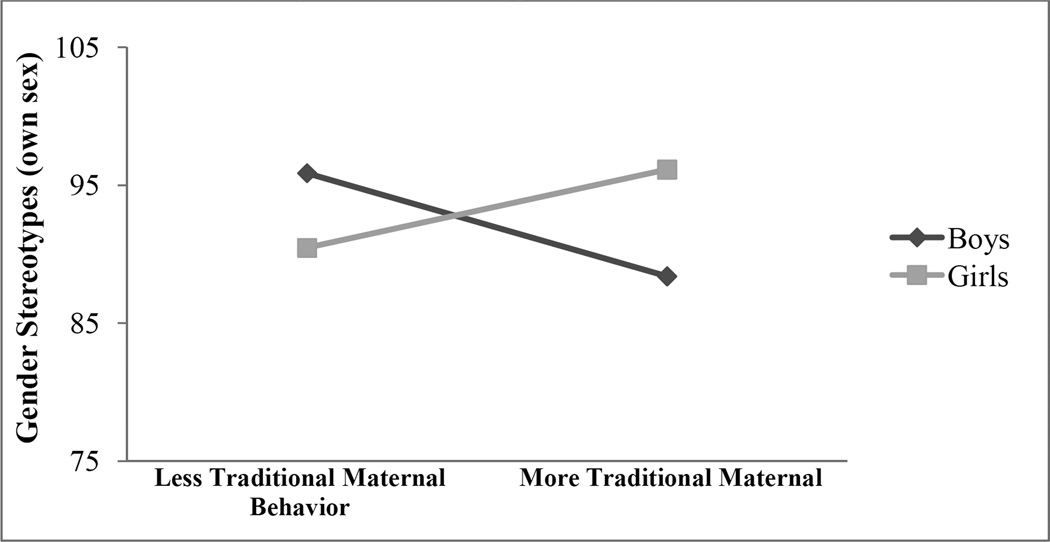Figure 1.
Interaction Between Mothers’ Concurrent Gendered Behavior and Child Gender Predicting Gender Stereotypes (Own Sex) in the Final Trimmed Model
Note. A high score on the Gendered Behavior scale represents more traditionally feminine behavior (i.e., housework, childcare) and less traditionally masculine behavior (i.e., fewer hours spent in paid employment). For children, a high score on the Gender Stereotypes (Own Gender) indicates more knowledge about gender stereotypes as they relate to members of the child’s own sex.

